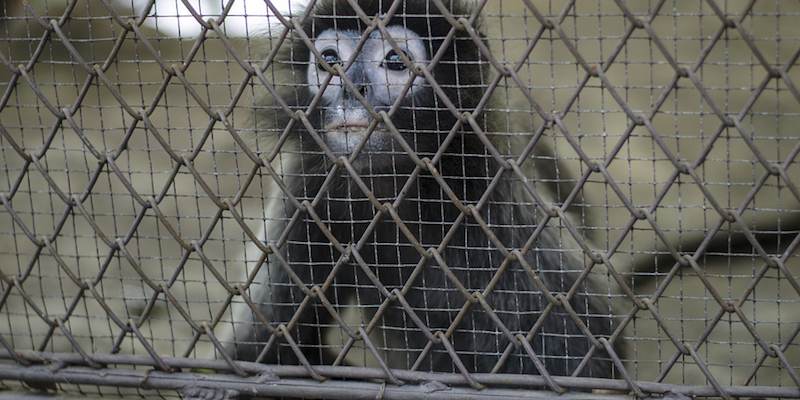The news of Copenhagen’s Zoo publicly executing a healthy giraffe, dismembering it, and then feeding it to the lions has sparked outrage among the public within the past several days. The zoo said they had no other choice, as it was required by the European Association of Zoos and Aquaria (EAZA), which informed the zoo that the giraffe, Marius, was genetically too similar to the other giraffes in the zoo’s breeding program.
Upon announcing the plans to put down Marius, the zoo received several offers from zoos that were willing to take in the perfectly healthy giraffe and was even offered a large sum of money by an independent private buyer. But, once again, regulations set forth by the EAZA restricted the zoo from being able to transfer Marius to a zoo that did not follow its guidelines of breeding.
Despite the best efforts of some of the world’s leading zoos to maintain and house healthy animals, zoos sometimes have to follow practices that seem to conflict their intended purposes of existence. Longleaf Safari Park, located in England, recently endured similar outrage from the public because it had to put down a family of lions (a lion, lioness, and their four cubs) who were becoming too violent and dangerous. Experts have weighed in on the subject, with some perplexed by the action, since the cubs could easily have been spared and the adult lions given to another zoo. Others have argued that the park was acting well within its means to restrict breeding and control the animal population (even though an insider at the park has reported the adult male lion, Henry, had already undergone a vasectomy and could no longer breed).
Finally, with the release of Blackfish this past year, more people are coming to realize the ethical and moral dilemmas that come from humanity’s desire to both protect and control animal populations. The underlying reasons for these actions are, of course, admirable and desperately needed in regards to certain wildlife populations. But the issue here rises with raising animals within captivity while trying to find a balance between two conflicting purposes; entertainment and preservation. And there is an incredibly thin line between the two.
Zoos are a fantastic social service (if they are given the proper budget, which unfortunately many are not). In a perfect scenario, they allow us to view animals that we would otherwise never have a chance to see in our lives. Furthermore, these animals are cared after and are given the best care they can be given by professionals who, in all but the rarest cases, truly adore and care about their welfare. While animal abuse is still rampant in other countries and industries (especially in many circuses), zoos and wildlife preserves have no shortages of educated experts who care for their animals.
But the problem, it seems, is far more complex and comes mainly from bureaucratic guidelines. The EAZA’s reasons for putting down Marius were, unfortunately, legally sound. They obviously could not risk the possibility of allowing inbreeding to occur, which could in turn create an unhealthy offspring, thus defeating one of the purposes of existence. And as easy as it would be to simply say the zoo should increase the population of their giraffes, issues of space and financing are obvious reasons as to why that would never work.
Regardless of all of these scenarios, the simple answer is that events like these are, in fact, instances of animal abuse. Destroying perfectly healthy animals, unless they are truly sick, in pain, or uncontrollable, defeats the entire purpose of organizations that want to portray themselves as undertaking a significant humanitarian effort to preserve wildlife safely. By cruelly exerting your own control in order to cull the population in a public display disguised as an “educational demonstration” demonstrates how.
There is no unfortunately simple answer to these situations. Agencies like the EAZA are always going to have guidelines that could easily have prevented the senseless death of Marius by allowing him to be transferred to another willing zoo. And for those who have seen Blackfish, you’ll know that many animals, especially large ones like whales that are used to living in expansive areas with large families, should never be kept in captivity. Regardless of how organizations try to portray the practice, it is cruel and greatly aggregates the animal.
This isn’t meant to attack any specific organization, as, once again, many zoos, and even places like SeaWorld, have done a tremendous amount by providing injured or endangered animals a safe home where they can be properly treated. But when organizations can almost blindly put down the animals they say they care about, it almost defeats the entire purpose of what they are doing because they are trying exert their own type of natural selection over the population. Why is it unethical to suggest we do this same practice on our own species, but yet we can willingly practice it on animals in the name of preservation?
Many of us have unfortunately had to make the tough decision to put down a sick animal that we view as a member of our family. But Marius was young and healthy, as were the lions at Longleat Safari Park. It might be time for humanity to determine if having animals on display for our entertainment is worth it, if we can convince ourselves that enough “good” is done by keeping animals in captivity to outweigh the obvious bad that comes with it. Otherwise we’ll just continue to see zoos with significantly less resources than the one at Copenhagen have to destroy the animals they say they care about because it is no longer convenient to take care of them.
Image Credits: ammza12,/BigStock.com







